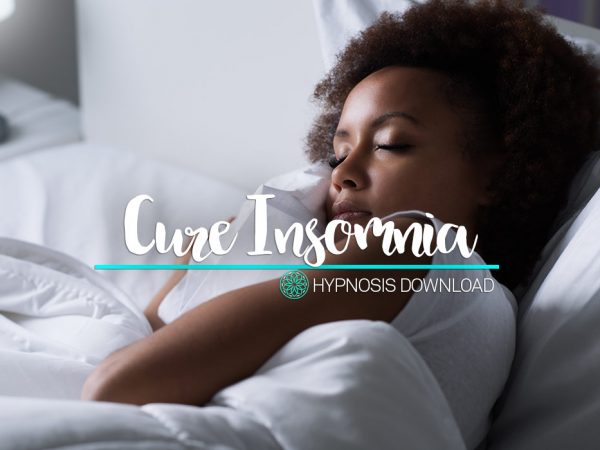
Insomnia, the inability to fall or stay asleep, is a common problem that affects many people worldwide. It can lead to a host of issues, including daytime fatigue, irritability, and a weakened immune system.
Fortunately, there are steps you can take to create a sleep-friendly environment that can help combat insomnia and improve the quality of your sleep. By making some simple changes to your sleeping area and establishing a bedtime routine that promotes relaxation, you can increase the chances of getting a good night’s rest.
In this article, we will explore some effective strategies for creating a sleep-friendly environment that can help you achieve the restful and restorative sleep you need.
Key Takeaways:
- Reduce noise and light pollution in the bedroom to promote restful sleep.
- Set the right temperature and humidity levels to create a comfortable sleeping environment.
- Choose the right mattress and bedding to promote a supportive and comfortable sleeping surface.
- Establish a consistent bedtime routine that promotes relaxation and reduces stress and anxiety.
- Minimize screen time before bed to reduce the impact of blue light and other stimulating factors.
- Invest in sleep aids, such as white noise machines, earplugs, or essential oils, to promote relaxation and calm.
- Use prescription sleep aids under the guidance of a doctor.
- Use these strategies in conjunction with each other to create a sleep-friendly environment that promotes restful and restorative sleep.
Minimize Noise and Light Pollution
One of the key components of a sleep-friendly environment is reducing noise and light pollution in the bedroom. Noise and light can both disrupt your sleep, making it harder to fall asleep and stay asleep throughout the night. Here are some tips for reducing noise and light pollution in your sleeping area:
- Use earplugs or white noise machines to block out noise.
- Keep your bedroom as dark as possible by using blackout curtains or shades.
- Avoid using electronic devices with bright screens in the bedroom.
- Use low-wattage bulbs or dimmer switches to create a relaxing ambiance.
- Minimize street noise by using heavy curtains or soundproofing materials.
By taking steps to reduce noise and light pollution in your sleeping area, you can help promote a restful and uninterrupted night’s sleep.
Set the Right Temperature and Humidity
The temperature and humidity levels in your bedroom can have a significant impact on the quality of your sleep. A room that’s too hot or too cold can make it difficult to get comfortable and can lead to frequent waking throughout the night. Similarly, an overly dry or humid room can cause discomfort, irritate your sinuses, and disrupt your sleep. Here are some tips for setting the right temperature and humidity levels in your bedroom:
- Keep your bedroom cool but not cold, ideally between 60-67°F (15-19°C).
- Use a programmable thermostat to adjust the temperature during the night.
- Consider using a fan or air conditioning to maintain a comfortable temperature.
- Use a humidifier or dehumidifier to adjust the humidity levels in the room.
- Avoid keeping windows open during the night as it can increase noise and disrupt sleep.
By setting the right temperature and humidity levels in your bedroom, you can create a more comfortable and conducive sleeping environment that promotes restful sleep.
Choose the Right Mattress and Bedding
The quality of your mattress and bedding can also have a significant impact on the quality of your sleep. If your mattress is old or uncomfortable, it can cause discomfort, making it difficult to get comfortable and fall asleep. Similarly, the wrong bedding can cause irritation and overheating, leading to restlessness throughout the night. Here are some tips for choosing the right mattress and bedding:
- Consider the firmness level of your mattress based on your sleep preferences.
- Choose bedding made from natural, breathable materials like cotton or linen.
- Use a mattress pad or topper to add extra cushioning or support.
- Replace old pillows and invest in pillows that support your sleep position.
- Wash your bedding regularly to keep it clean and fresh.
By choosing the right mattress and bedding, you can help create a comfortable and supportive sleeping environment that promotes restful sleep.
Establish a Sleep-Conducive Bedtime Routine
Creating a relaxing and consistent bedtime routine can help you wind down and prepare for sleep. A bedtime routine can signal to your body that it’s time to sleep and help you relax, reducing stress and anxiety that can interfere with your ability to fall asleep. Here are some tips for establishing a sleep-conducive bedtime routine:
- Create a relaxing environment by dimming the lights and lowering the temperature.
- Engage in relaxing activities like reading or taking a warm bath.
- Avoid stimulating activities like working or watching TV before bed.
- Try relaxation techniques like meditation or deep breathing exercises.
- Go to bed and wake up at the same time each day to establish a consistent sleep schedule.
By establishing a sleep-conducive bedtime routine, you can help your body and mind relax and prepare for sleep, improving your chances of falling and staying asleep throughout the night.
Reduce Screen Time Before Bed
The blue light emitted by electronic devices like smartphones, tablets, and computers can interfere with the body’s natural production of the sleep hormone melatonin, making it harder to fall asleep. In addition, engaging in stimulating activities like social media or work can make it more difficult to relax and prepare for sleep. Here are some tips for reducing screen time before bed:
- Avoid using electronic devices for at least 30 minutes before bedtime.
- Use blue-light blocking glasses or a screen filter to reduce the impact of blue light.
- Read a book or engage in a calming activity instead of using electronic devices.
- Turn off notifications on your devices to minimize distractions.
- Consider keeping electronic devices out of the bedroom entirely.
By reducing screen time before bed, you can help your body and mind relax and prepare for sleep, reducing the impact of blue light and other stimulating factors that can interfere with your ability to fall and stay asleep.

Reduce Screen Time Before Bed
Invest in the Right Sleep Aids
For some people, creating a sleep-friendly environment may not be enough to combat insomnia. In these cases, sleep aids can be a helpful solution. There are many sleep aids available, from prescription medications to over-the-counter supplements and devices. Here are some options for sleep aids:
- White noise machines or apps to drown out background noise and promote relaxation.
- Earplugs to block out noise and create a quieter sleep environment.
- Essential oils or aromatherapy to promote relaxation and calm.
- Over-the-counter sleep aids like melatonin or valerian root.
- Prescription sleep aids, which should only be used under the guidance of a doctor.
While sleep aids can be helpful, it’s important to consult with a doctor before taking any supplements or prescription medications. In addition, it’s important to use sleep aids in conjunction with other sleep-promoting strategies, such as creating a sleep-conducive environment and establishing a consistent bedtime routine.
Conclusion
Insomnia can be a frustrating and exhausting problem, but creating a sleep-friendly environment can help improve your chances of getting the restful sleep you need.
By reducing noise and light pollution, setting the right temperature and humidity, choosing the right mattress and bedding, and establishing a sleep-conducive bedtime routine, you can help your body and mind relax and prepare for sleep.
In addition, by reducing screen time before bed and investing in the right sleep aids, you can further improve your chances of falling and staying asleep throughout the night.
With these strategies, you can create a sleep-friendly environment that promotes restful and restorative sleep, helping you wake up feeling refreshed and ready to take on the day.
Sleep Hypnosis Downloads
Take a look at our self-hypnosis downloads related to improving your sleep.
Further Reading
- https://www.mayoclinic.org/diseases-conditions/insomnia/diagnosis-treatment/drc-20355173
- https://www.webmd.com/women/guide/insomnia-tips
- https://www.pennmedicine.org/updates/blogs/health-and-wellness/2020/january/how-to-conquer-insomnia
- https://www.everydayhealth.com/insomnia/what-when-you-cant-sleep-all-about-insomnia-treatments/
- https://www.piedmont.org/living-better/how-to-deal-with-insomnia



